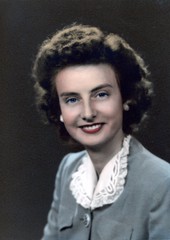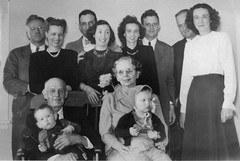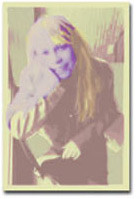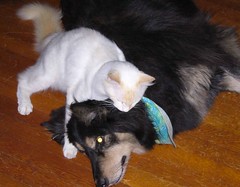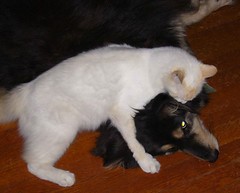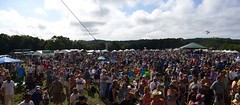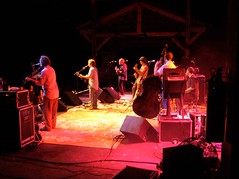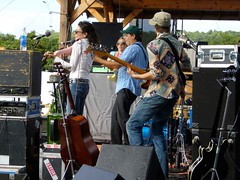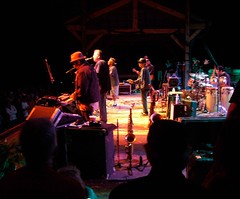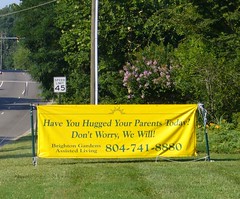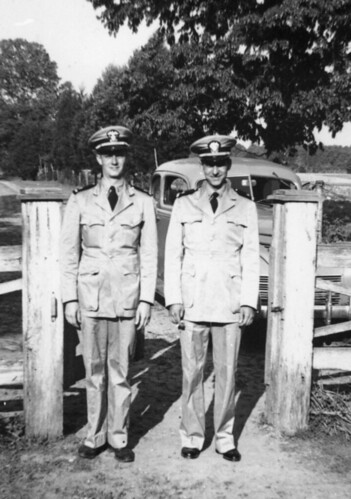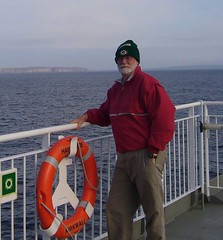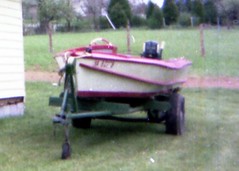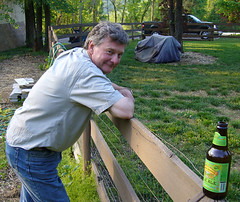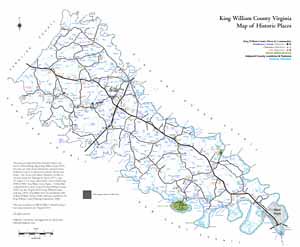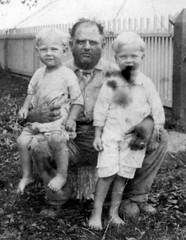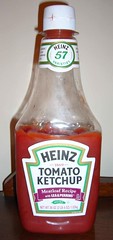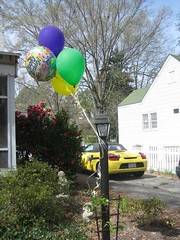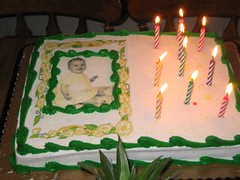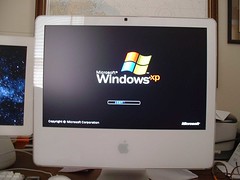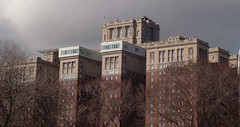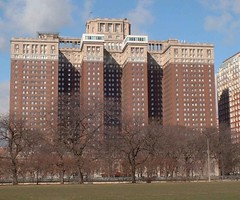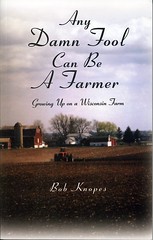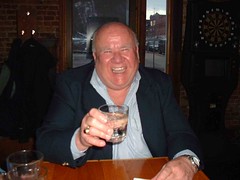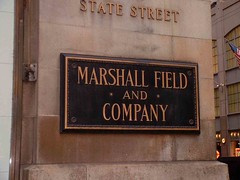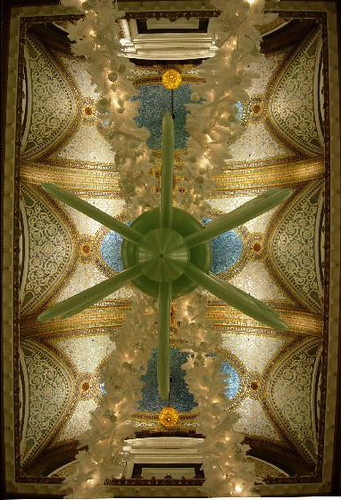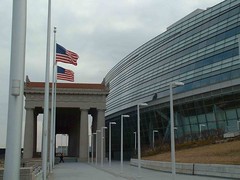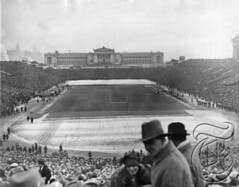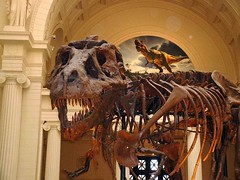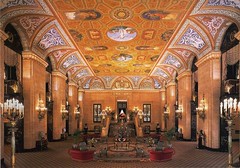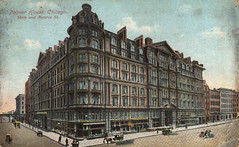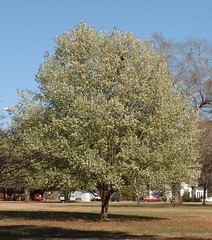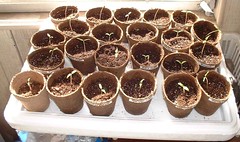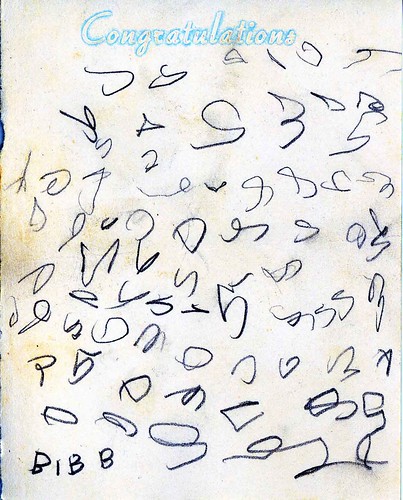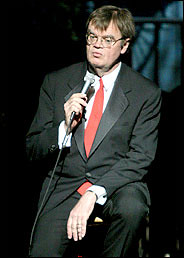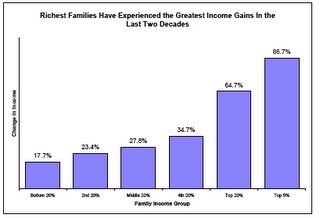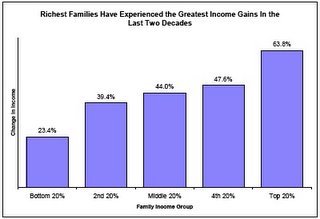I seem to have been busy doing everthing but blogging. One of my recent projects was writing a biography of Peyton Neale Clarke, the author of the book at the center of the book I am writing. On the off-chance that someone else may be interested in Clarke and/or has some addition information about him they would be willing to share, I am posting this biography.
Peyton Neale Clarke - A Biography
In 1897 John P. Morton and Company of Louisville Kentucky published a brown leather-bound volume by Peyton Neale Clarke, a local forty-two year-old stockbroker, titled
Old King William Homes and Families - An Account of Some of the Old Homesteads and Families of King William County, Virginia From Its Earliest Settlement. Since reproduced several times in both print and electronic format, almost half of its pages are devoted to only one of these families, the Edwardses. The book includes stories about Edwards family members and an extensive, detailed genealogy reaching back over a century and a half which has been highly prized by our family.
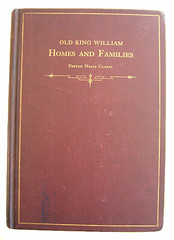
The author seems never to have lived in the county. However it is evident that he was well acquainted with King William through his mother, Judith Browne Claiborne Neale. She was the daughter of James Hill Neale and Judith Edwards, of two well-established local families. Judith Edwards was the only daughter of Butler Edwards, the fifth son of the Ambrose Edwards who figures prominently in Clarke’s book. But Clarke wrote that his mother was not named for his grandmother Judith Edwards but "for the wife of her uncle, William Hill, who married Judith Browne Claiborne of ‘Elsing Green’ ... a warm friend of her mother's..."
Clarke continued that Judith Neale moved to Richmond from King William County about 1840 - when she was 18 - marrying John David Clarke sometime thereafter. Peyton was close to his mother, recording in his book that she “spent the last years of her earnest Christian life in Louisville, Kentucky, where she died October 19, 1895, and is buried in ‘Cave Hill Cemetery,’ at Louisville.” As Clarke also reported that none of his mother’s other children were living in Louisville in 1897, it is likely she was living with him and his family at the time of her death. Clarke dedicated Old King William Homes and Families to her, a dedication missing from the reprints.
Clarke's fraternal grandfather, Andrew Clarke, was born in Edinborough,2 Scotland in 1782. He moved to Virginia about 1800 and married Mary Freeman. Thus a Freeman family history appeared in his book despite having no direct connection to King William County. Andrew and Mary had two children: John David Clarke and Sarah Bruce Clarke, who Clarke reported to have died "before she was twenty years of age."
The 1840 U.S. census shows Andrew Clarke in Richmond as head of a family comprised of one male between 50 and 60 and two females, one between 40 and 50 and the other - presumably Sarah - between 15 and 20. The 1850 census lists Andrew and Mary Clarke in a two-person household. He is 67 and she 60. He is listed as a grocer. Clarke wrote that his grandmother Mary, who "had a narrow escape at the burning of the Old Richmond Theatre in 1811," died November 5, 1851. Clarke added that his grandfather, "a plain and honorable man who lived a quiet, unostentatious life," died February 10, 1860. Both grandparents were buried at Richmond's Shockoe Hill Cemetery.
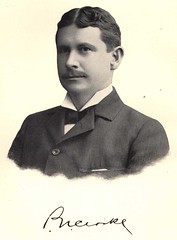
Of Peyton's father, John David Clarke, less is known. Oddly Clarke did not provide vital information for his father, other than he was buried with his parents. The census is a bit more generous. The 1860 census shows John David Clarke's family in Richmond. He is 38 and wife Judith is 37. It appears he was a carpenter. All four children - two boys and two girls - are listed by name and age. Sally B. is 13 and is listed as having attended school within a year. Andrew is 12 and also has been to school. Eva is nine and Peyton, born March 22, 1855, is five. Clarke wrote that he was "Reared amid the turbulent scenes of the war between the States." Certainly that was an understatement.
The 1870 census shows Judith Clarke as head of household, indicating that her husband died during the 1860's. While it is possible that John David Clarke died soldiering in the 1861-65 war, his age and Clarke’s lack of comment in the book makes this unlikely. The census lists eldest son Andrew Neale Clarke as 22, a clerk in a furniture store. Eva Neale Clarke, 19, is "At Home." Peyton, now 15, is listed as an apprentice at a furniture store, possibly working with his brother. Clarke wrote that the oldest child Sallie Belle Clarke at the age of 23 married Captain John James Wright in 1867 and they had moved to Kentucky; she and her husband are missing from this census. The Clarkes seemed to be doing well enough financially to afford two live-in servants, black women, 18 and 36 years of age. However family circumstances would soon change considerably.
Clarke’s sister Eva eloped and married Clinton DePriest on July 7, 1871. She died that August, less than six weeks later. "She was a most lovable and popular young woman, and her romantic marriage and early demise awakened a flood of sympathy from even entire strangers, as the number of poems, newspaper notices, etc., published at the time testify." He provided no clues as the circumstances of her elopement or death. We do not know if her death is connected, but that same month Peyton moved to Kentucky. As he was only 16 it is likely he initially stayed with his sister Sallie and her husband, probably near Louisville.
Clarke wrote that his older brother Andrew later moved to Kentucky, in 1879 when he was 29. An A.N. Clarke - probably Andrew - is listed in the 1880 census as living in a Louisville boarding house. He is described as being born in Virginia, 32, and a clerk in a store. Clarke mentioned in his book 17 years later that his brother was living in Paducah, Kentucky and was “the local manager of the R.G. Dun & Company Mercantile Agency.” Clark also mentions that Andrew had married in 1895, at the age of 47. The 1900 census finds Andrew with wife Katie in a Paducah boarding house. He is 56 and she 36. No children are mentioned. He is listed as a commercial reporter, which describes the business of R.G. Dun and Company. After 1900 no mention of Andrew or Katie has been found in census records.
When Peyton's mother moved to Kentucky is not known. We do know from census records that she was living with her daughter Sallie Wright in Anchorage, Jefferson County, Kentucky - now a suburb of Louisville - in 1880. Oddly, no reference seems to exist in the 1880 census for Peyton Neale Clarke, even though by this time he had married Mary Newman of Louisville and they had a young son.
Mary Newman was the daughter of William Houston Newman and Elizabeth Howard. Like many Kentuckians, the Newmans had Virginia connections, providing Clarke with a reason to include a short Newman family history in his book, again despite having no obvious ties to King William. Like his grandfather Andrew Clarke, Peyton's father-in-law was in the grocery business.
In naming their four children Peyton and Mary followed the tradition of using established family names. William Newman Clarke, born October 9, 1877, was named after Mary's father. Eva Neale Clarke, born April 21, 1883, was named after Peyton's late sister. Sadly this Eva Neale Clarke also died young, a little over two years later, on May 20, 1885. She was buried at local Cave Hill Cemetery near her mother’s relatives. Namesake Peyton Neale Clarke, Jr. was born on April 29, 1888. Sanford Howard Clarke, born January 4, 1896, was named after Mary Newman's brother Sanford Keith Newman3, who had died the year before.
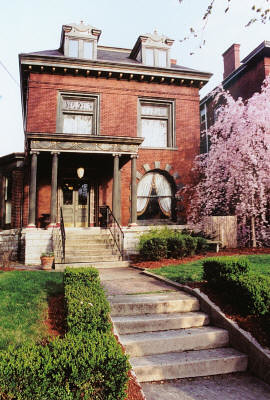
The 1890 census forms for almost the entire U.S., including Kentucky, were burned in a 1921 Washington D.C. fire. However we know from other local records that about 1893 the Clarke family occupied a home at 1431 South 3rd Street, Louisville. It would be renumbered in 1909 as 1333. This would remain the family home for over 40 years. Clarke also mentioned that his sister’s husband, Captain John James Wright, retired about 1890, and they were living in Dresden, Germany at the time the book was published.
The 1900 census finds the entire Clarke family listed at their home for the last time. The eldest son, known as Newman, is 22 and listed as a clerk. Twelve-year old Peyton Jr. is "at school." Sanford is four. They have two single female servants. Rossie Keating (?) is white, 27 years old. The other, Lucy Hamilton, is black and listed as 45. For at least another twenty years she would remain a member of the Clarke household.
Clarke wrote in his book only that he was "engaged in business." However in as early as 1886 Clarke was listed in a city directory as an Assistant Manager at R.G. Dun & Co. - a commercial credit reporting company - at 826 6th Street, Louisville. In 1933 this company merged with the Bradstreet Companies to form Dun & Bradstreet Corporation, or, since 2003, D&B. At some point Clarke left R.G. Dun and formed his own business, P. N. Clarke & Company. This was likely to have occurred before the 1900 census that describes Clarke as a “broker,” not his job title in the city directory nor the primary business of R.G. Dun.
The 1910 census lists Peyton Sr. as a “broker of stocks and bonds.” Peyton Jr.,now 21, is an automobile salesman. This was two years after the Ford Model T was introduced. Fourteen year-old Sanford is still in school. The 1910 census shows that a male servant, coachman Jacob Williams, has been added to the household. He is 28, single, and is listed with a racial designation that looks like "Mu" or mulatto. Rossie has gone, replaced by another young (20) unmarried female servant, Cora Russ (?).
The 1910 census also shows that Newman is now married to Eda Turner. This occurred perhaps as early as 1908 as he is listed in the city directory in 1908-09 as living in the St. James Apartments on St. James Street. By 1910 they are living at 520 Belgravia Court. At census time they have a 2 month-old boy, William T. Clarke.
In Caron’s 1911 Directory for Louisville, P. N. Clarke & Company is listed as occupying rooms 307-316 of the Columbia Building. They are described as “brokers and financial agents.” Joining Peyton Sr. in the directory is his eldest son, Newman. Peyton Jr. is a clerk.
In 1917, as the U.S. entered WW I, Newman and Peyton Jr. registered for the draft. Newman was 40, married, a broker of stocks and bonds now with John L. Dunlap & Co. at 58 Main Street. He and Eda had moved to 1907 3rd Street. Peyton Jr. was 29, single, living with his parents, and was employed by the Louisville Athletic Association as Secretary to the Louisville Baseball Club, likely the Colonels of the minor league American Association.
The 1920 census lists Peyton Sr. as a “financial agent.” Sons Peyton Jr. and Sanford are living at home. Peyton Jr. is listed as 29 but is 32. Sanford is listed correctly as 23; he will be 24 the day after he is enumerated. Both are single, with occupations listed as “none.” A new servant has joined 69 year-old Lucy Hamilton. She is Sally Elizabeth Surding (?), white, 36 and married. Newman, Eda and nine year-old William T. (listed as Turner) are still living at 1907 3rd Street. In 1926 Peyton Sr. found time to write a second book, Digest of Kentucky Tax Laws, published by the Kentucky Tax Reform Association. It was a slim volume, 28 pages.
Finally, in the 1930 census, Peyton Sr. is listed as 75, with no occupation given. Mary is 72. Newman Clarke has returned to live at home. Now 51, divorced, he is listed as a broker of stocks and bonds. No references to his ex-wife and child have been found in this census, the last currently available to the public. Peyton Jr., 42, is listed as a stenographer at City Hall. He remains single. For the first time in 30 years Sanford is not listed as living with his family. In fact, Sanford seems to be missing from the 1930 census altogether. Also missing is Lucy Hamilton. Perhaps reflecting the times, the census shows no “servants” but that they have taken in a border, Lottie Bledsoe, white, 45, and married. She is listed as a housekeeper at a “private house,” probably for the Clarkes.
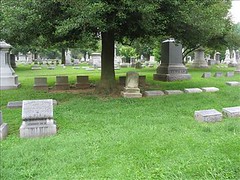
The 1930’s were hard on the nation, and the Clarke family. The depression must have been particularly distressful for financial advisors and stock and bond salesmen. Peyton Sr. was the first to die, March 10, 1936. He was almost 81. He was buried near his mother and daughter Eva. Only seven months later Peyton Jr. joined them. He was 48. Next was Sanford Clarke in March, 1937, only 41. Mary Clarke witnessed this all; she lived two more years, passing away in May, 1939. Like her husband she lived to be 80. Finally Newman passed away in November, 1944. Today they all lie together in Section P, Lot 661, at Cave Hill Cemetery.
After-word:
In 1941 a Miss Ada R. Turner was buried at Cave Hill, but not with the Clarke family. In 1982 William Turner Clarke was also buried at Cave Hill, although with neither the Clarke family, nor Miss Ada. More research is necessary to determine if these were Newman’s ex-wife and son.
Author’s notes:
The sources of most of this biography come from Clarke’s Old King William Homes and Families, and US census records found at Ancestry.com. Additional information was found using various internet sources, especially www.oldlouisville.com, a web site of the Old Louisville National Historic Preservation District. The photo of the Clarke plots at Cave Hill was provided by Gregg Fowler, a former resident of King William County, now living in Louisville.
In looking over what I have been able to learn about Peyton Neale Clarke and his family several questions present themselves: Why did Clarke write so little about his father? Why did Eva Neale Clarke choose to elope and what caused her death? Where was Peyton Clarke and his young family during the 1880 census? What took Captain John James Wright and wife Sallie Belle Clarke to Dresden? What became of Andrew Clarke and his wife Katie? What happened to Newman’s family? Do they have any living descendants? And why did Clarke devote so much space in his book to the Edwards family? Maybe more research will answer these questions.
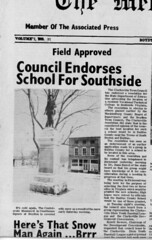 Several years ago I was talking with someone about the county I lived in as a youth. I mentioned the possible implications of the orientation of the statue of the Confederate soldier in front of our local courthouse; it faced the courthouse with its back towards the rest of the world.
Several years ago I was talking with someone about the county I lived in as a youth. I mentioned the possible implications of the orientation of the statue of the Confederate soldier in front of our local courthouse; it faced the courthouse with its back towards the rest of the world.